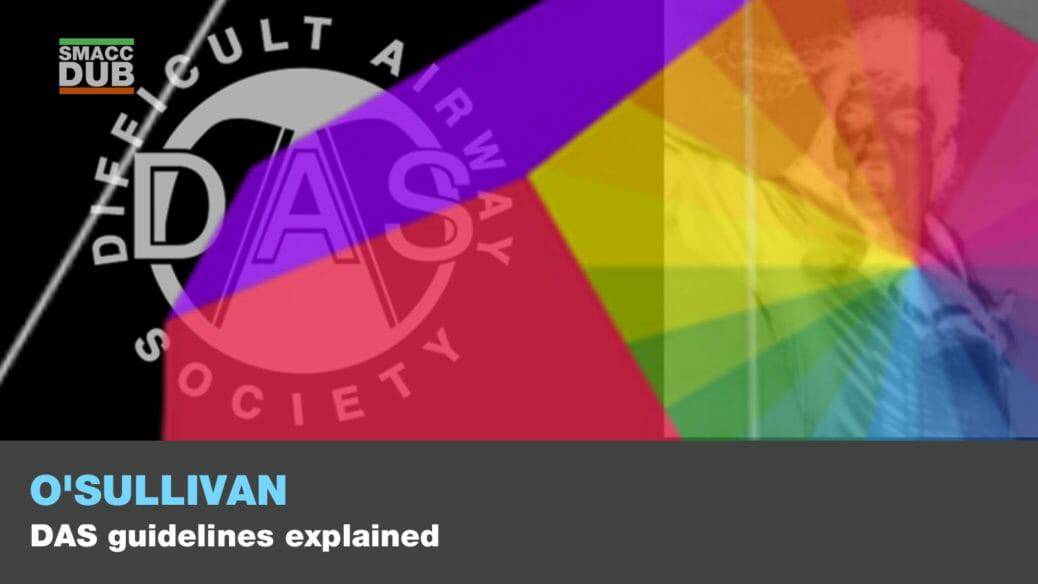Airway management is a fundamental responsibility and skill of all involved e.g. emergency physicians , anaesthetists and critical care physicians. We need airway algorithms because there is still severe morbidity and mortality related to airway management. (NAP 4 study, ASA Closed claims series)
The 2015 Difficult Airway Society guidelines, published in the British Journal of Anaesthesia in December 2015, provide a sequential series of plans (A to D) to be used when tracheal intubation fails. They are designed to promote patient safety by prioritising oxygenation and minimising trauma and they highlight the role of neuromuscular blockade in making airway management easier.
The guidelines recognise the difficulties in decision making during an emergency and stress importance of human factor training. The guidelines include steps to assist the anaesthetic team by providing a common stem of options (a simple algorithm) for maintaining oxygenation, limiting the number of airway intervention attempts, encouraging declaration of failure by placing a Supraglottic Airway Device and overtly recommending a time for stopping and thinking. They emphasise the importance of considering discontinuing anaesthesia and waking the patient up (if appropriate) when tracheal intubation has failed.
Videolaryngoscopy and second generation Supraglottic Airway Devices are recommended and all anaesthetists, intensivists and emergency medicine physicians, should be trained to use them. There is however limited evidence available relating to the management of the can’t intubate can’t oxygenate situation (CICO) PLAN D. However it is strongly recommended that all anaesthetists must be trained to perform a surgical cricothyroidotomy and a standard operating procedure for Front of Neck Access to the airway is described using a “scalpel bougie tube” technique.
Learning Objectives
• Importance of optimal preoxygenation.
• Best technique at laryngoscopy.
• Maximum of 3 attempts at laryngoscopy / intubation.
• Maximum of 3 attempts at placing a Supraglottic Airway Device.
• When tracheal intubation fails, waking the patient up is almost always the safest option.
• All practitioners involved in airway management need to learn the “scalpel bougie tube” method of cricothyroidotomy.

























